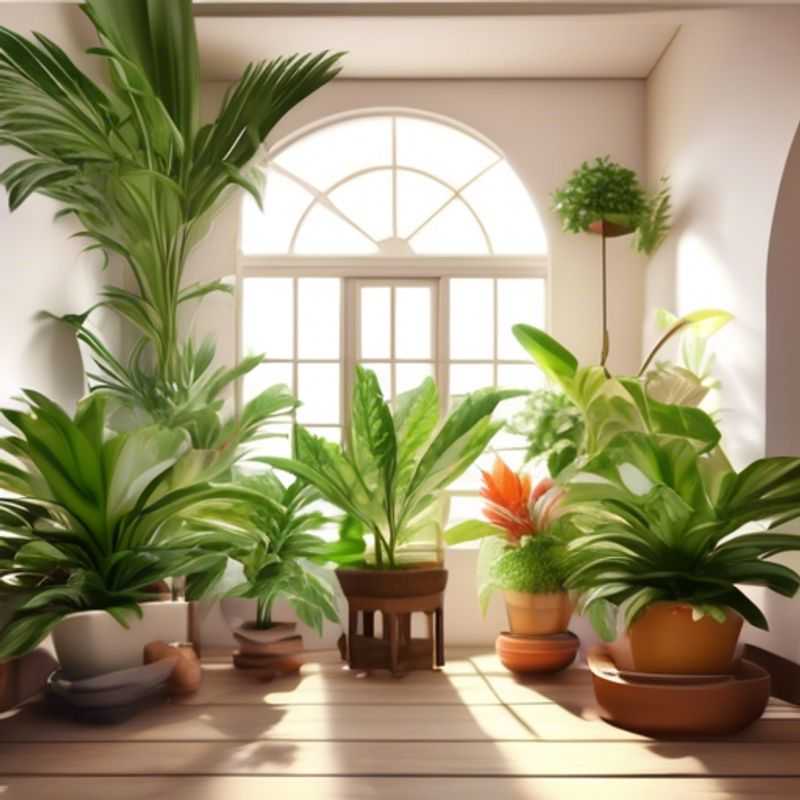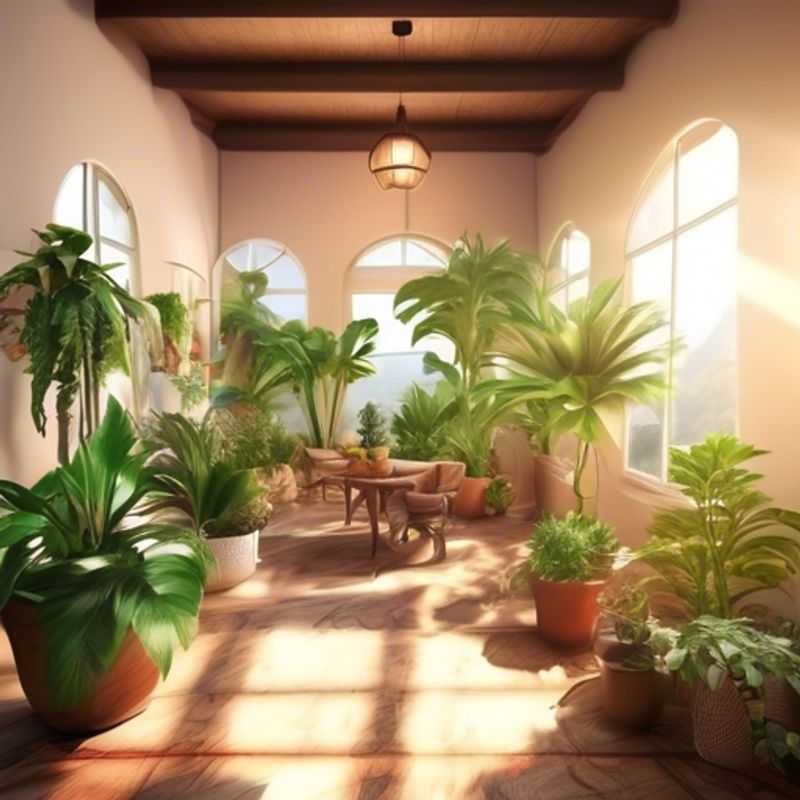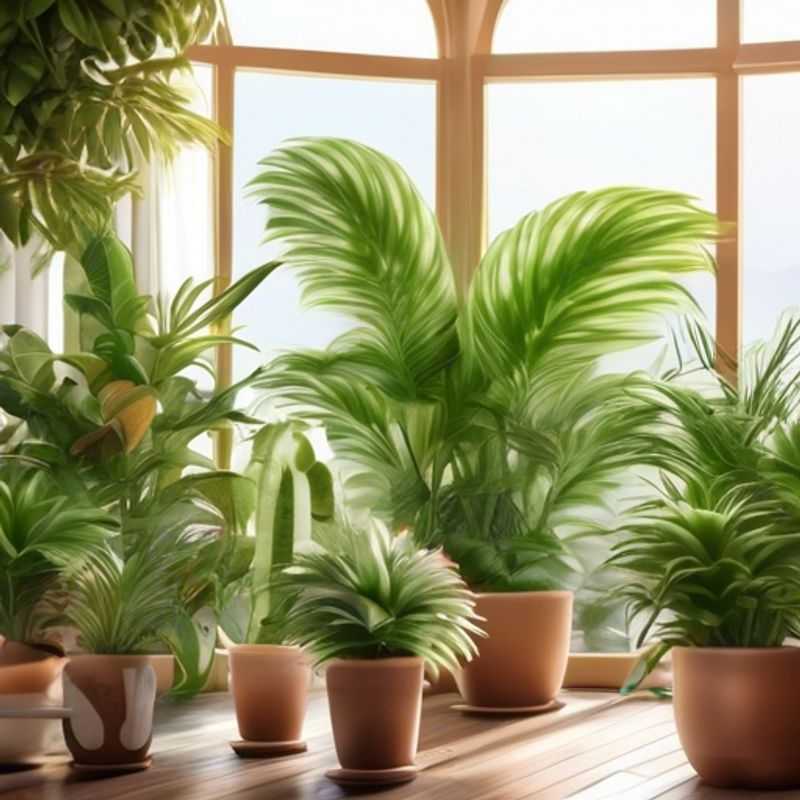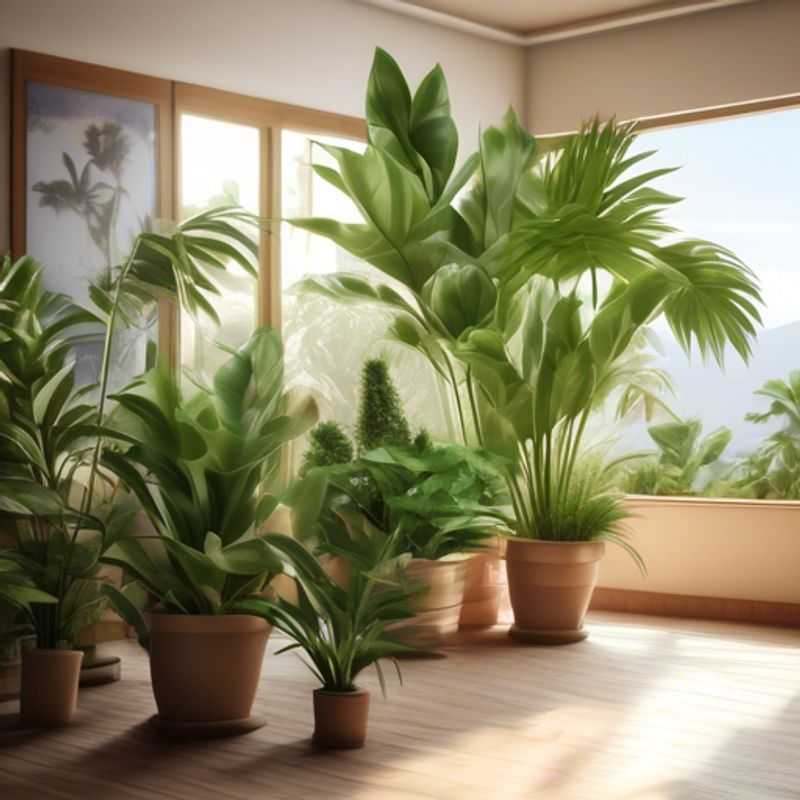Top Things to Know Before Buying Easy House Plants to Grow

7 Essential Things to Know Before Bringing Home Your New Easy Houseplant
Ah, the allure of greenery indoors! Bringing home a plant can instantly brighten up your space and offer a sense of calm. But before you head to the nursery, there are a few things to consider to ensure your new leafy friend thrives in your home. It's like choosing the perfect tool for a job; you wouldn't use a screwdriver for hammering, right? So, let's dive into the essential things to know before bringing home your new green companion:
First, understand the lighting requirements of the plant. Just like we need sunlight to thrive, plants have varying needs. Some, like succulents, love bright, direct sunlight, while others prefer filtered light or even shade. If you have a dimly lit apartment, consider a low-light plant like a snake plant or ZZ plant. Imagine trying to grow a cactus in a rainforest; wouldn't that be a mismatch?
Next, research the watering needs of the plant. Overwatering is one of the most common reasons for plant death, so knowing your plant's thirst level is crucial. Some plants, like peace lilies, prefer moist soil, while others, like cacti, thrive on infrequent watering.

Unlocking the Secrets of Plant Lighting: A Guide to Thriving Greens
Understanding the lighting requirements of your plants is crucial for their health and growth. Just like humans need sunlight to produce Vitamin D, plants need light to photosynthesize, the process by which they convert light energy into chemical energy for growth.
The amount of light a plant needs depends on its species. Some plants, like succulents, thrive in bright, direct sunlight, while others, like ferns, prefer shady conditions. You can find the specific light requirements of your plants online or by consulting a gardening guide.
Pay attention to the following factors:
Light intensity: Measured in foot-candles or lux, this refers to the brightness of the light.
Light duration: The number of hours of light a plant receives each day.
Light spectrum: Plants require a balance of red and blue light for optimal growth.
Light quality: This refers to the type of light, such as natural sunlight, fluorescent, or LED light.
If your plants aren't getting enough light, you'll notice signs like stunted growth, pale leaves, and weak stems. You can supplement natural light with grow lamps, especially during the winter months or for plants that require specific light conditions.
When selecting grow lamps, consider the following factors:
Spectrum: Choose lamps that emit a balance of red and blue light.
Intensity: The intensity of the light should be sufficient to meet the needs of your plants.
Placement: Place the lamps close enough to your plants to provide adequate light, but not too close to prevent scorching.
Timing: Plants typically require 12-16 hours of light per day, although this can vary depending on the species.
By providing your plants with the right amount of light, you'll help them thrive and reward you with beautiful foliage and vibrant blooms.

Thirsty Plants: A Guide to Understanding and Meeting Their Watering Needs
Determining the watering needs of your plant is crucial for its health and longevity. Each plant species has unique requirements, so researching its specific needs is essential. You can start by researching online or consulting gardening books to find information on the plant's origin and natural habitat. This can provide insights into its ideal moisture conditions. Look for information about the plant's water tolerance, whether it prefers moist soil or well-drained soil.
Pay attention to the plant's growth stage. Young seedlings typically require more frequent watering than established plants. Observe the soil moisture. Stick your finger about an inch into the soil. If it feels dry, it's time to water. You can also use a moisture meter to check the soil moisture levels. During hotter months, you may need to water more frequently due to increased evaporation. However, avoid overwatering, which can lead to root rot and other problems.
Consider the pot size and material. Smaller pots dry out faster than larger ones. Similarly, porous pots, such as terracotta, allow water to evaporate more quickly than plastic pots. Adjust your watering frequency accordingly. In addition to the frequency, you should also consider the amount of water. Ensure that you are providing enough water to reach the roots, but avoid saturating the soil.
Experimentation is key. While research provides a good starting point, your plant's specific needs may vary depending on your environment, growing conditions, and even the pot you choose. Keep a close eye on your plant and adjust your watering schedule as needed to maintain its optimal health.

Matching Plants to Your Climate: Ensuring Success in Your Garden
Before embarking on your gardening journey, it's crucial to ensure the plant is suitable for your climate. This means considering the plant's hardiness zones and its tolerance to your local weather conditions. Hardiness zones, defined by the USDA, indicate the average minimum winter temperatures a region experiences.
Understanding these zones is vital because it helps you choose plants that can thrive in your specific environment. For instance, if you live in a region with harsh winters, selecting plants that are hardy to those conditions is essential. Conversely, if you live in a warm climate, choosing plants that can withstand the heat is important.
Beyond hardiness zones, also consider the plant's needs for sunlight and water. Some plants require full sun exposure, while others prefer partial shade. Similarly, some plants need frequent watering, while others are drought-tolerant. Choosing plants that align with your local conditions will maximize their chances of thriving.
By considering these factors, you'll increase your chances of enjoying a flourishing garden. Remember, researching and selecting the right plants for your climate is a crucial step in any successful gardening journey.

Don't Be Stumped: Choosing the Right Plant Size for Your Garden
Before you bring a new plant home, it's crucial to consider the size it will grow to. This may seem obvious, but many people underestimate the space a plant requires. A small seedling can quickly transform into a giant, requiring more light, water, and space than you initially planned.
Understanding the plant's mature size is crucial for proper planning. It allows you to select the right pot, choose the right spot in your home, and avoid overcrowding. Don't let your plant's future growth catch you by surprise!

Decoding the Humidity Needs of Your Plants: A Guide to Thriving Greens
Understanding humidity preferences is crucial for keeping your plants thriving. Humidity levels are a significant factor in plant health. Some plants, like ferns and orchids, thrive in humid environments, while others, such as cacti and succulents, prefer drier conditions. Consider your climate: Humid climates can lead to issues with fungal diseases. Conversely, dry climates can cause plants to dry out and become brittle.
Here are a few simple ways to adjust humidity for your plants:
Group Plants Together: Plants naturally release moisture through transpiration. Grouping plants together can increase the humidity around them.
Use a Humidifier: A humidifier can be a great way to boost the humidity in your home, especially during dry seasons or in drier climates. Choose a humidifier that's appropriate for the size of your space.
Pebble Tray: Fill a tray with pebbles and water, then place the pot on top of the pebbles. The water will evaporate, increasing the humidity around the plant.
Misting: Regular misting can temporarily boost humidity but might not be sufficient on its own, especially for plants requiring high humidity. Use distilled or filtered water for misting to avoid leaving mineral deposits.
Observing your plants for signs of distress, such as wilting, browning leaves, or stunted growth, can help determine if they need more humidity. Consult plant care guides or resources for specific humidity preferences for each of your plants.

Decoding Your Plant's Needs: Special Care Considerations
Every plant has its own unique needs, and understanding these is crucial for successful cultivation. Here's a quick guide to identify special care requirements for your plants:
Light: Plants need varying amounts of sunlight. Some thrive in full sun, while others prefer shade. Observe your plant's leaves for clues – pale, yellowing leaves might indicate too much sun, while long, leggy stems could mean it's not getting enough.
Water: This is a key factor. Overwatering is a common mistake, leading to root rot. Underwatering can also be detrimental. Feel the soil – if it's dry an inch below the surface, it's time to water. Watering frequency varies based on plant type, season, and container size. Always use well-draining soil to prevent waterlogging.
Temperature: Plants have optimal temperature ranges. Extreme heat or cold can stress them, affecting growth and even survival. Consider the plant's origin and natural habitat to determine its ideal conditions.
Humidity: Some plants, especially tropical species, require higher humidity. Group plants together or use a humidifier to create a more humid environment.
Fertilization: Plants need nutrients for healthy growth. Regular fertilization, using a balanced fertilizer, is crucial. Avoid over-fertilizing, which can burn roots.
Pruning: This helps maintain shape, promote branching, and remove diseased or damaged parts. Pruning methods vary depending on the plant type. Always use sharp, clean tools to prevent infections.
Pests and Diseases: Regularly inspect your plants for signs of pests or disease, such as insects, discoloration, or wilting. Act promptly with appropriate treatments to prevent further damage.
Repotting: As plants grow, their roots need more space. Repotting into a larger container with fresh soil is essential. The best time to repot is usually in the spring or early summer.

Is That Plant Pet-Friendly? A Guide to Safe Gardening for Your Furry Friends
Bringing a new plant home can be exciting, but it's crucial to ensure it's safe for your furry friends. Not all plants are pet-friendly. Many common houseplants contain toxins that can be harmful, even fatal, if ingested by pets.
Here are a few important things to consider:
Identify the plant species accurately. This is the first step to knowing if it's safe for your pets. Use online resources, plant identification apps, or consult a local gardening expert.
Research the plant's toxicity. Once you know the plant's species, search for information about its toxicity to pets. Websites like the ASPCA or Pet Poison Helpline are great resources.
Keep potentially toxic plants out of reach. If you have a plant that's toxic to pets, place it in an area your pet cannot access. High shelves, hanging baskets, or rooms your pet doesn't frequent can be good options.
Supervise your pet around plants. Even if a plant is generally considered safe, it's wise to supervise your pet when they're around it.
Monitor for signs of poisoning. If you suspect your pet has ingested a toxic plant, look for symptoms like vomiting, diarrhea, drooling, lethargy, or difficulty breathing. Contact your veterinarian immediately.
Consider pet-friendly alternatives. There are many beautiful and safe plants for homes with pets. Some popular options include spider plants, Boston ferns, and African violets.
Remember, it's always better to err on the side of caution when it comes to your pet's safety. Taking these simple steps can help ensure your home is a healthy and happy place for both you and your furry companions.
